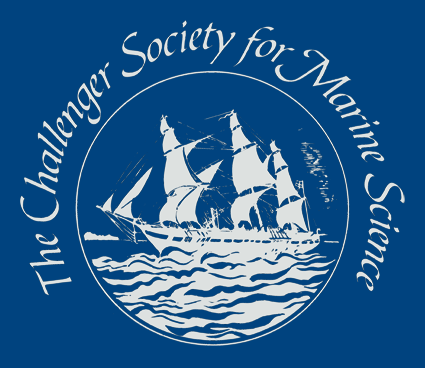The History of the Challenger Expedition
In 1870, Charles Wyville Thomson (right), Professor of Natural History at Edinburgh University, persuaded the Royal Society of London to ask the British Government to furnish one of Her Majesty's ships for a prolonged voyage of exploration across the oceans of the globe. On the 7th December 1872, the expedition put to sea from Sheerness aboard the corvette H.M.S. Challenger.The vessel was a three-masted square-rigged wooden ship of 2300 tons displacement and some 200 feet in length. She was essentially a sailing ship even though she possessed an engine of 1200 horsepower. It was planned that the ship would be under sail for most of the cruise, using the engine primarily for manoeuvring when conducting scientific observations and deploying heavy gear. All but two of the ship's 17 guns had been removed to make way for purpose-built scientific laboratories and workrooms designed specifically for biological, chemical and physical work. Storage space for all the trawls and dredges was also necessary, together with space for the anticipated sample collection.
The commanding officer was Captain George Nares (left), with approximately 20 naval officers (including surgeons and engineers) and 200 crew. There were six civilian staff and scientists under the direction of Wyville Thomson that included the naturalists John Murray and Henry N. Mosely, the chemist/physicist John Buchanan and the official artist J.J. Wild.
Between her departure in December 1872 and her return to Spithead on 24 May 1876, H.M.S. Challenger traversed 68,890 nautical miles, in the course of which she sampled in the North and South Atlantic and Pacific Oceans and travelled north of the limits of drift ice in the North Atlantic polar seas and south of the Antarctic Circle.
Wyville Thomson reported the Challenger to have made 362 sample/observation stations "at intervals as nearly uniform as possible". At each station, the following observations were made, as far as circumstances allowed:
- The exact depth was determined.
- A sample of the bottom averaging from 1 ounce to 1 pound in weight was recovered by means of the sounding instrument.
- A sample of bottom water was procured for chemical/physical examination.
- The bottom temperature was recorded by a registering thermometer.
- At most stations, a fair sample of the bottom fauna was procured by means of the dredge or trawl.
- At most stations, the fauna of the surface and of intermediate depths was examined by the use of tow nets variously adjusted.
- At most stations, a series of temperature observations was made at different depths from the surface to the bottom.
- At many stations, samples of sea-water were obtained from different depths.
- In all cases, atmospheric and other meteorological conditions were carefully observed and noted.
- The direction and rate of the surface current was determined.
- At a few stations, an attempt was made to ascertain the direction and rate of movement of the water at different depths.
At its completion, The Report discussed with full detail of text and illustrations the currents, temperatures, depths and constituents of the oceans, the topography of the sea bottom, the geology and biology of its covering and the animal life of the abyssal waters. The Challenger cruise had lain the cornerstone of scientific oceanography and begun its introduction to the wider scientific and lay community. The findings of the cruise were correctly described by John Murray in 1895 as "the greatest advance in the knowledge of our planet since the celebrated discoveries of the fifteenth and sixteenth centuries".
Latest News
Royal Society Publishing Photography Competition 2025
Please see a message from the Royal Society below:
We are delighted to announce that the 2025 Competition is now open for entries until 15 August for a chance to win £1000! The competition celebrates the power of photography in conveying the wonder of science happening all around us and photographs can be submitted in the categories of: Astronomy, Behaviour, Earth Science and Climatology, Ecology and Environmental Science, and Microimaging.
The competition is free to enter and open to anyone studying or working in science at graduate level or above. Category winners will receive a one-year membership to the Royal Photographic Society and the overall winner will receive a grand prize of £1,000. Find out more: https://bit.ly/RSPphotocomp
October 2025 MEDIN Workshop: Marine Data Management, Governance and the MEDIN toolset
The Marine Environmental Data and Information Network (MEDIN) are pleased to announce that registration is now open for the next occurrence of our popular free online training workshop: ‘Marine Data Management, Governance and the MEDIN toolset’ on the 13th – 17th October 2025 on OceanTeacher Global Academy.
Marine Data Management, Governance and the MEDIN toolset
The Marine Environmental Data and Information Network (MEDIN) and OceanWise are delighted to invite you to attend our popular free online training workshop: ‘Marine Data Management, Governance and the MEDIN toolset’ on the 19th – 23rd of May 2025.
